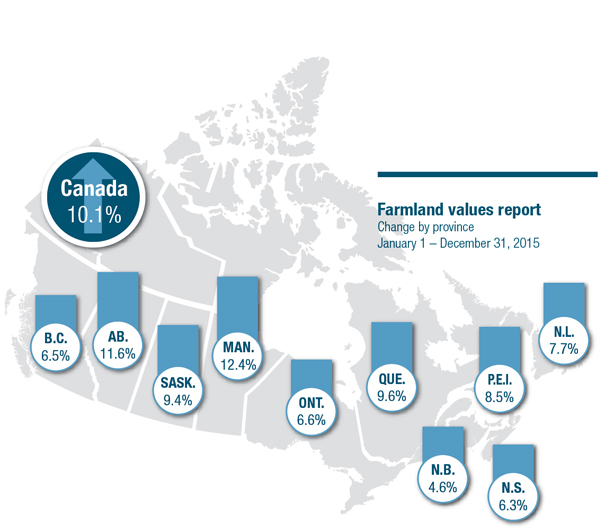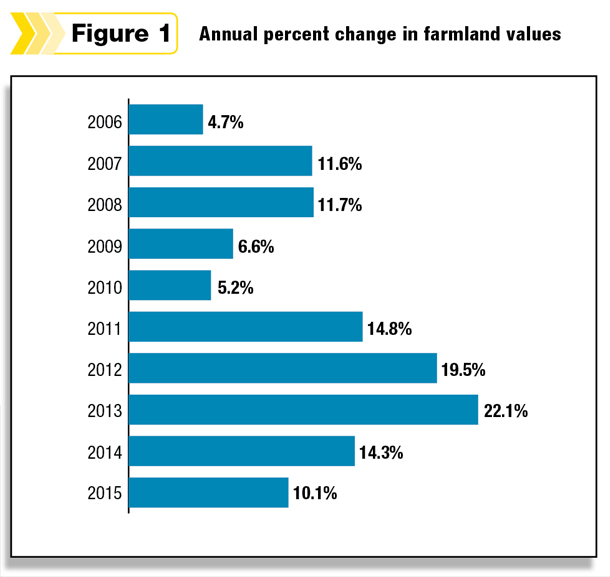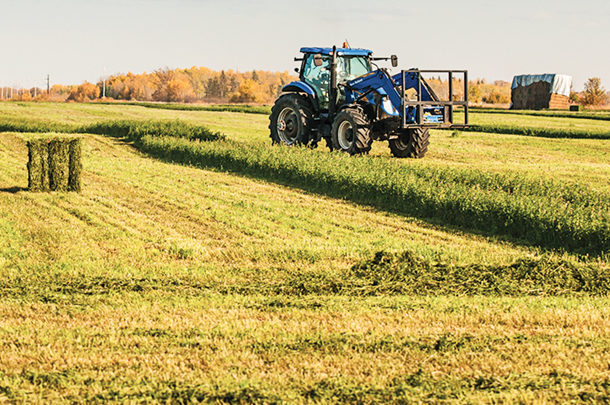The report shows that nationally, and in many key agriculture regions, the average value of farmland increased at a slower pace last year. Overall, there appears to be greater volatility with a higher number of locales where values decreased.
A strong agriculture sector – supported by healthy crop receipts and low interest rates – continued to sustain increases in farmland values in 2015. But some of the key factors that influence farmland values are beginning to change.
We’re now seeing lower commodity prices offset by low interest rates and a weak dollar. The weak loonie not only makes our exports more competitive but helps producers receive a better price for their commodities that are mainly priced in U.S. dollars. It becomes a real tug-of-war between competing factors that influence farmland values.
Average farmland values in Canada showed a 10.1 percent increase in 2015 compared to a 14.3 percent increase in 2014 and a 22.1 percent increase in 2013.

All provinces saw their average farmland values increase, and Manitoba experienced the highest increase at 12.4 percent. The rate of increase slowed in six provinces.
Strong commodity prices from 2010 to 2013 generated high profits for crop producers and contributed to record increases in the value of farmland. Profit margins and demand for agriculture commodities remain strong, mostly due to the low value of the Canadian dollar.
The best-case scenario would be for the average value of farmland to reach a point of long-term stability where any future increases or decreases are modest and incremental.
Corinna Mitchell-Beaudin, FCC executive vice-president and chief risk officer, recommends producers ensure they account for a possible “softening” of farmland values and future interest rate increases in their risk management plans.
“Despite a recent strong performance in the agriculture sector, agriculture will always be cyclical, so producers should be prepared for the ups and downs along the way,” Mitchell-Beaudin said. “Producers are encouraged to identify key risks and available solutions to manage these risks should they emerge in their business.” PD
Visit Farm Credit Canada to view the FCC farmland values report, video, webinar and historical data.
PHOTO: FCC farmland photo. Photo provided by Farm Credit Canada.

-
Jean-Philippe Gervais
- Chief Agricultural Economist
- Farm Credit Canada










